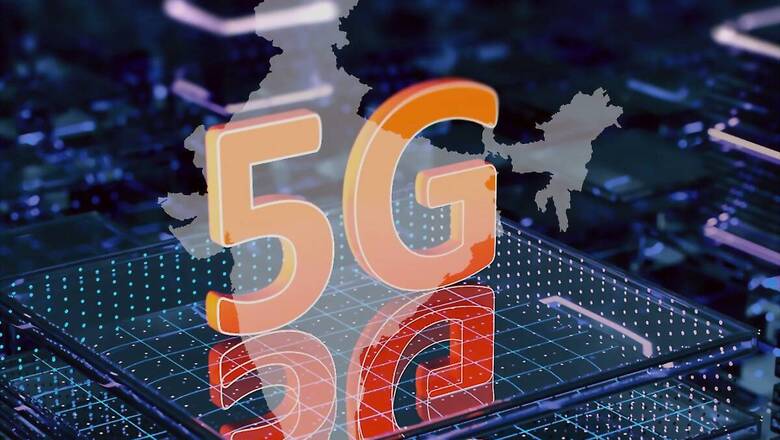
views
At Reliance Industries’ 43rd annual general meeting, chairman-managing director Mukesh Ambani made a milestone announcement – Reliance Jio, India’s largest mobile telecom operator, would bring commercial 5G services to all of India as soon as 5G trials and spectrum auctions are held. The announcement finally offered something definite to India’s quest for upgrading its networks to 5G. Alongside, it also set into motion an opportunity for Indian vendors to get more visibility in the global telecom space, in line with the nation’s ‘vocal for local’ narrative. Compounding this are rising anti-China sentiments, concerns regarding Chinese data espionage, and the role that major China-based telecom infrastructure providers play in the scheme of things.
Chinese vendors on the line
Recently, the department of telecommunications (DoT) appointed a special panel to look into the possible participation of Chinese companies in India’s 5G trials. According to sources from earlier this week, Huawei and ZTE, two of the key Chinese companies that offer network infrastructure, had both applied for participating in India’s 5G trials. However, the panel has reportedly suggested against the participation of Chinese vendors in India’s 5G infrastructure.
While officials with telecom operators stated that a formal communication is yet to be put forth by the DoT, the suggestion is to keep Huawei and ZTE out of India’s telecom industry – hence dealing a potentially heavy blow to both our operators and the Chinese electronics providers, in terms of finances.
Expense and time
Speaking to News18, Nikhil Batra, associate research director, telecommunications at IDC Asia-Pacific, says that both Bharti Airtel and Vodafone-Idea use Huawei equipment in certain network circles in India. Even if they are to be done away with, Batra believes that the process of simply switching to all Indian providers in both hardware and software is a difficult task.
“Getting 5G up and running (in India) will require an ecosystem of network equipment providers, as well as tech vendors providing the complete telecom software stack. Chinese manufacturers or not, given that we don’t have any major India-based network equipment providers, there will be others who India will need to rely on,” Batra says.
Jaideep Ghosh, chief operating officer at Shardul Amarchand Mangaldas & Co, says that there are two ways to define the problems. The first, he says, is time. “Replacing mainstream telecom network equipment, and that too in a large scale, is an extensive, phase-wise effort and may take up to a few years. For example, recently the UK government has asked all telecom operators to remove existing Huawei equipment by 2027. Beyond equipment, many network OEMs have long-term services contracts built in, which also then needs to be reconsidered.”
The second factor, Ghosh affirms, is cost. So far, Ghosh says that Chinese players in the telecom infrastructure space have been the most cost effective among other Asian and European vendors that also provide equipment to Indian operators. IDC’s Batra, meanwhile, says that equipment made by Indian companies may be even more cost efficient. However, the key will be to see whether Indian operators manage to provide the full stack of hardware and software offerings to telcos necessary for enabling 5G services in India, which may be difficult since it takes years to build efficient network technologies.
Goldilocks moment for Indian companies?
The key, then, will be for Indian telecom operators to strike the right balance between available equipment, cost of network deployment and the longevity of Indian providers. While Reliance Jio has stated that it has successfully developed a full-stack 5G offering built from scratch in India, it is the only operator to have done so as of now. The other two operators, it is important to note, will also be required to keep pace, for the sake of a healthy, competitive industry. As Batra says, “Excluding a major provider like Huawei would reduce the options for Indian telcos. Going from three major providers to two, or from four to three, results in reduced competition and might lead to lower levels of innovation and higher cost to Indian telcos.”
The opportunity for Indian companies to seize this chance is the bright note in the early saga of India’s 5G narrative. The moment can create its own, robust telecom hardware industry, which in the long run may help develop export-worthy products in the near future.
Editors' Note: This article is part of the 25 Years of Internet In India series, where try to capture how the state of mobile services, home broadband, services and content have evolved, particularly in the past few years. We try to understand what the internet means for us, be it for the new reality of work from home, for entertainment including all the Netflix binge watching, music streaming, online gaming and more.
















Comments
0 comment